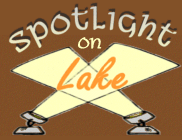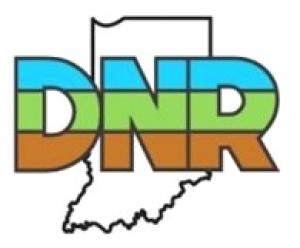
Wild Bulletin: January 2024
The inside scoop on what's outside

Get “set” for 2024: Go trapping
As many hunting seasons slow down, trapping season picks up. Winter is the best time to harvest furbearers because their fur is thickest and in the best condition.
Furs aren’t the only parts you can harvest from animals that you trap. Meats of many furbearers, including beaver, muskrat, and raccoon are enjoyed within many hunting communities. You can cook beaver meat in ways that are similar to how you cook beef, and raccoon tastes great when slow-cooked in the style of pulled pork. For more information and season dates for each species, check out our hunting & trapping webpage.
See the history of Cikana State Fish Hatchery
Tucked away in Morgan County lies one of DNR’s treasures: Cikana State Fish Hatchery (SFH). Our new property video highlights Cikana SFH’s warm-water/cool-water facility that focuses on the production of walleye, sauger, channel catfish, largemouth bass, bluegill, redear sunfish, black crappie, and fathead minnows, and houses Indiana’s State Fair fish. Along with these species, Cikana SFH also manages brood stock populations that support their fish stockings of more than 28 million fish a year across Indiana.
Looking to visit a new area of your home state? Cikana SFH is open for visitors from dawn to dusk and offers property tours. You can visit the ponds, walk hiking trails, or view wildflower plots. We’d love to meet you there!
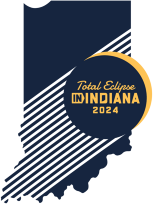
Join DNR for the total solar eclipse
Clear your schedule if you haven’t already—on April 8, a total solar eclipse will arc across much of Indiana from the southwest to the northeast. Many of DNR’s properties are in the zone of totality, in which the sky will become almost completely dark for approximately four minutes.
Use our interactive map online to view the DNR properties that will be in the path of totality, or download a printable map for your upcoming adventure.
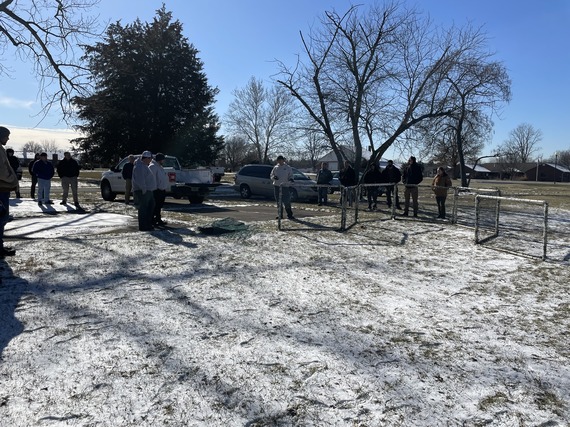
Wildlife Control Operators wanted: Attend the annual workshop
Attend the Waterfowl Workshop on Jan. 24 to meet a portion of the requirements to become a qualified Waterfowl Control Operator (WCO) for 2024. All individuals who attend will be able to pursue becoming a WCO to conduct Canada goose management for hire in the 2024 season.
New WCOs must attend the training, and existing WCOs and employees of WCO contractors are welcome. Individuals physically conducting waterfowl control for hire are required to attend.
To register for the free workshop, contact Jessica Merkling at jmerkling@dnr.IN.gov or 260-244-6805, with your name, phone number, and email by Jan. 19.

Weed Wrangle volunteers at Jasper-Pulaski FWA, National Public Lands Day 2023.
A new year to volunteer for Division of Fish & Wildlife
If this year’s resolutions include spending time with family and friends, sharing and learning new skills, or caring for natural resources, DFW can help. Interested in an ongoing volunteer role, a short-term project, or supporting a one-time event? Becoming a DFW volunteer is a great way for individuals, families, and groups to connect with others who share their commitment and support for outdoor activities like angling, hunting, hiking, and wildlife viewing and monitoring.
The steps are easy, and the benefits are great. Create a volunteer profile, speak with staff, and become a part of our team. Looking for a great time to start? Martin Luther King Jr. Day, Jan. 15, is recognized as a national day of service. Become a volunteer today to connect with an opportunity that supports healthy natural resources for your community and all Hoosiers. Thank you for all the ways you contribute to DNR, and happy new year!

Another successful workshop under our belts: SWAP updates
The Indiana State Wildlife Action Plan (SWAP) guides our state’s conservation actions for the upcoming decade, based on Indiana’s six distinct habitat regions. During the past year, DNR has been meeting with partners to draft the 2025 SWAP.
In early December, we completed our last workshop of 2023, meeting with our partners in the Corn Belt region in Zionsville. Every new idea, friendly debate, and snack helped support our vision for the next draft of the SWAP. Thank you to our partners who attended!
We’ll host one last workshop in February. Looking to become more involved in the planning that helps conserve fish, wildlife, and the places they call home? Visit our SWAP webpage or contact Elizabeth Mabee at SWAP@dnr.IN.gov.
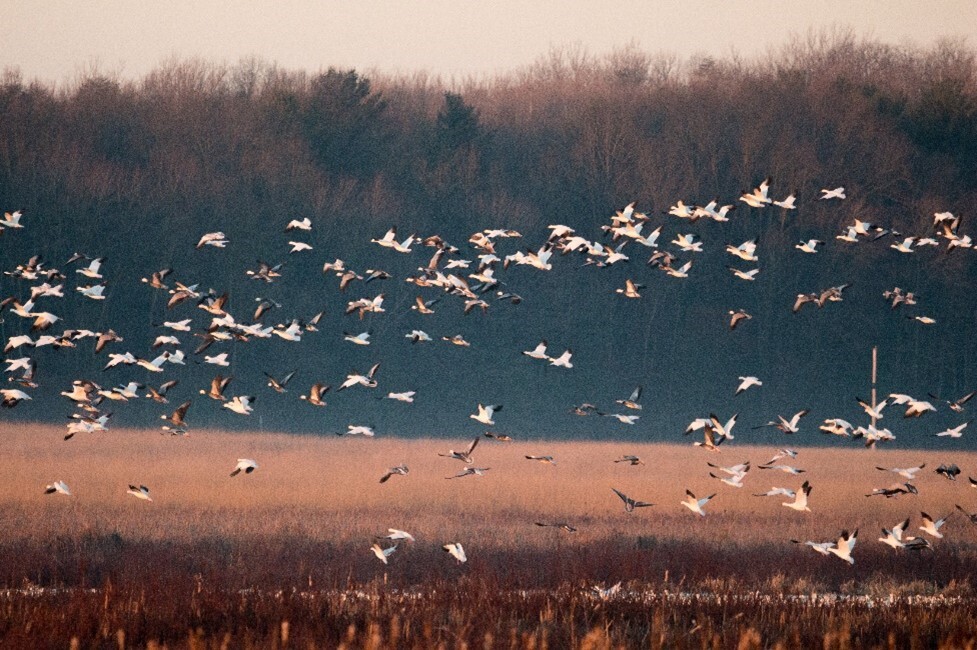
Light Goose Conservation Order opens Feb. 12
In 1999, the first Light Goose Conservation Order was issued in response to damaged Arctic breeding grounds. To conserve the tundra habitat, the Light Goose Conservation Order was instituted and is still in place today.
Light Goose Conservation Order season opens on Feb. 12. Indiana hunters can harvest snow geese and Ross’ geese (white and blue phases of both species) using electronic calls and unplugged shotguns, and can hunt anytime between ½ hour before sunrise to ½ hour after sunset without a bag limit. All you need is a hunting license, an Indiana waterfowl stamp, and a special free permit (available online or at FWAs early this month). Neither an HIP number nor a federal waterfowl stamp is required to participate.
DNR requests that hunters report any banded geese they harvest to the North American Bird Banding Program.
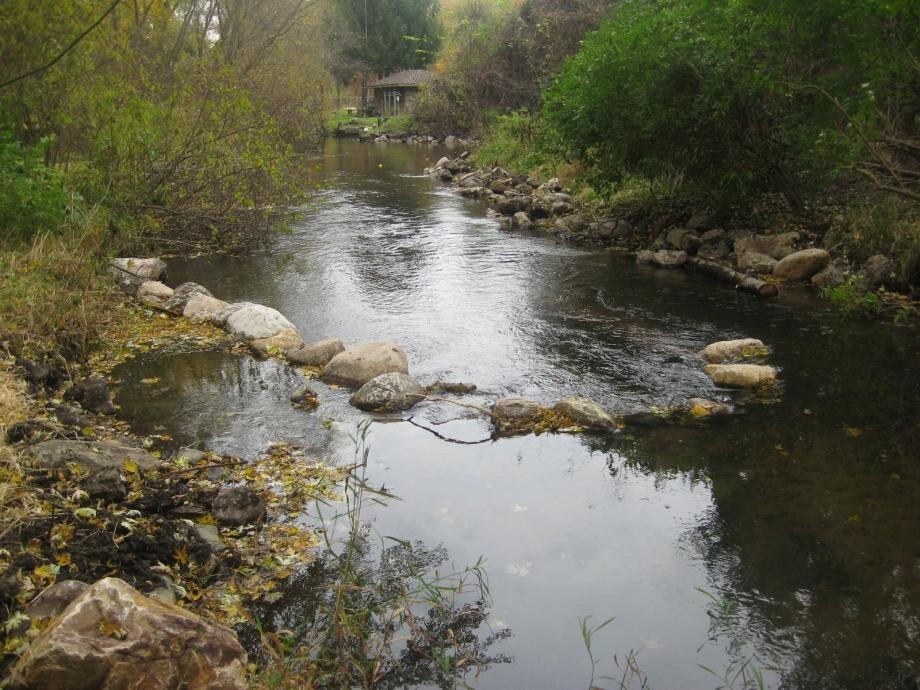
Help your habitat: LARE grant applications due Jan. 15
Ring in the new year with a conservation win. Applications for submitting to the Lake and River Enhancement (LARE) program are due Jan. 15.
The LARE program strives to protect and enhance aquatic habitat for fish and wildlife while ensuring continued use of Indiana’s publicly accessible lakes, rivers, and streams. A full list of qualifying projects is available on our website.
LARE staff is ready to answer your questions ahead of the application deadline. Learn more about the grant requirements on our website.
Learn about lead: Tackling nonlead prices for anglers
Going fishing soon? Take some time to consider using nonlead tackle during your next adventure. Tungsten jigs are similar in price to their lead counterparts, although tungsten weights are slightly more expensive than lead weights.
Switching to nonlead tackle isn’t the only way to reduce lead exposure in the environment. Find out other ways you can help keep Indiana’s lands healthy on our lead shot webpage.

Looking forward to more contributions to conservation
Whether you’re an angler, hunter, birder, wildlife viewer, or an outdoor enthusiast of any type, you contribute to conservation in Indiana. The Division of Fish & Wildlife looks forward to managing Indiana’s fish and wildlife resources in 2024 with your continued support.
Contact us if you have questions about fish, wildlife, habitat, licenses, or any other inquiries. See our contact information online to view maps of biologists in your district.
Natural Resources Commission schedule
Mark your calendars—the Natural Resources Commission (NRC) has released their meeting dates for this year. The NRC plans to meet six times over the course of the year:
- Jan. 23 at 10 a.m., ET (9 a.m., CT)
- March 19 at 10 a.m., ET (9 a.m., CT)
- May 21 at 10 a.m., ET (9 a.m., CT)
- July 16 at 10 a.m., ET (9 a.m., CT)
- Sept. 17 at 10 a.m., ET (9 a.m., CT)
- Nov. 19 at 10 a.m., ET (9 a.m., CT)
All meetings will be at Fort Harrison State Park in The Garrison. For more information and past meeting minutes, visit the NRC’s website.
Recent news releases
Upcoming events
- Jan. 3 – Whooper Wednesday, Goose Pond FWA
- Jan. 24 – 2024 Waterfowl Workshop, Fort Harrison State Park
- April 8 – Total Solar Eclipse, State of Indiana
More
- Buy a license
- Hunting information
- Where to Hunt
- Fishing information
- Where to Fish
- Fish & Wildlife properties

The Indiana Natural Resources Foundation celebrates and preserves Indiana’s natural legacy by raising funds to support the Indiana Department of Natural Resources (DNR) and its programs. Together, we have helped expand public lands, restore wildlife habitat, and create outdoor educational and recreational opportunities for Hoosiers.
About Fish and Wildlife Management in Indiana
Fish and wildlife management and public access are funded by fishing and hunting license revenue and also through the Wildlife and Sport Fish Restoration Programs administered by the U.S. Fish & Wildlife Service. These programs collect excise taxes on sporting arms and ammunition, archery equipment, fishing equipment, and motor boat fuels. The money is distributed among state fish and wildlife agencies based on land size and the number of licensed anglers and hunters in each state. Find out more information about fish and wildlife management in Indiana at Wildlife.IN.gov.
